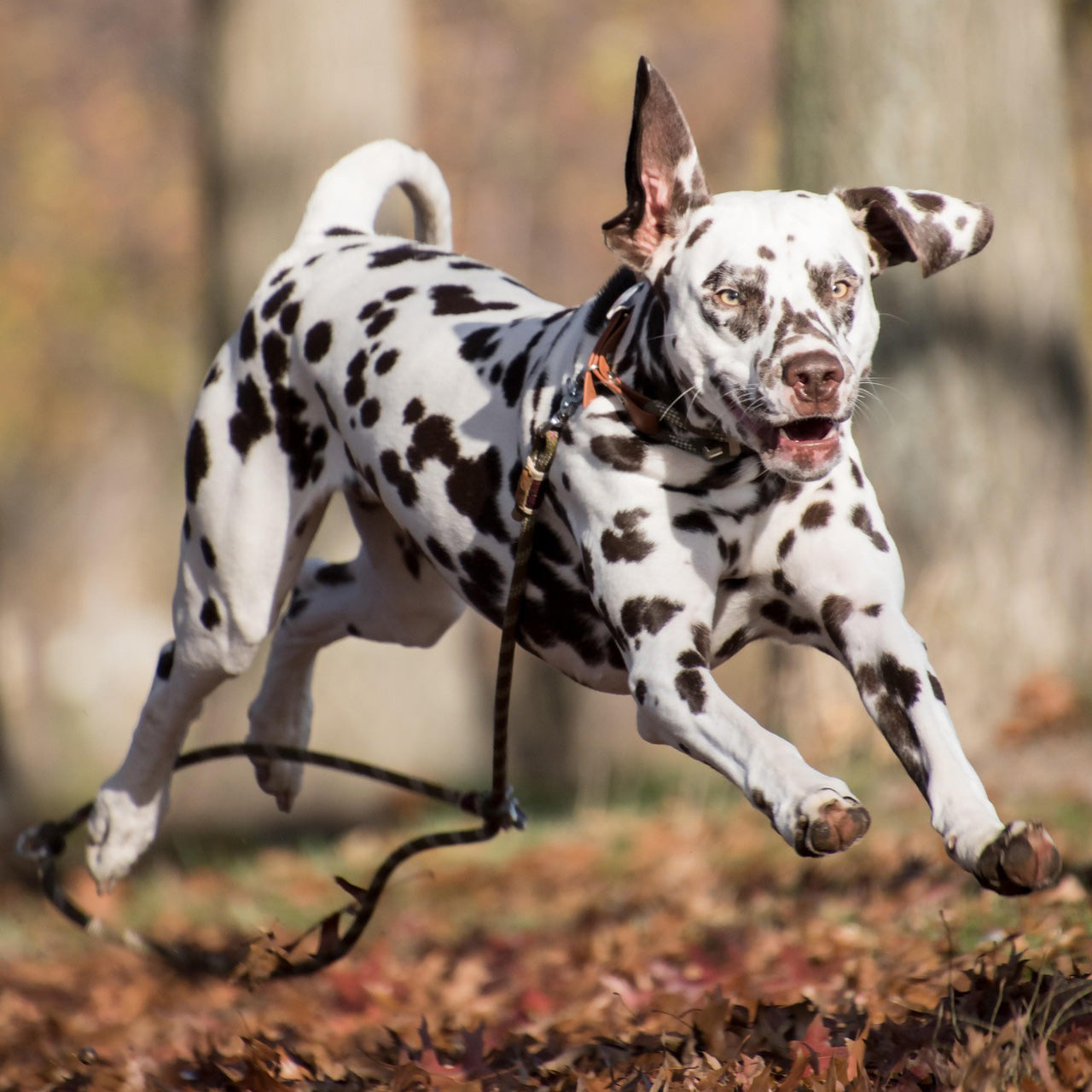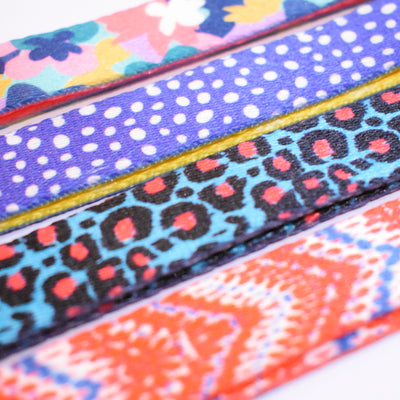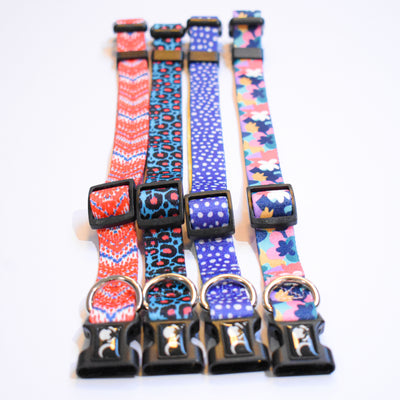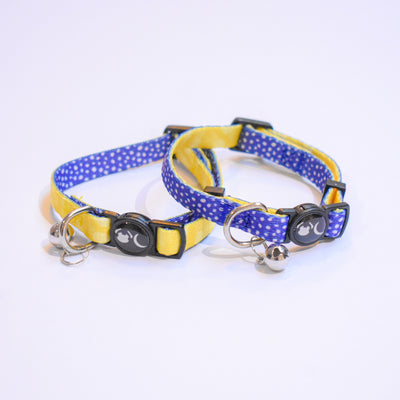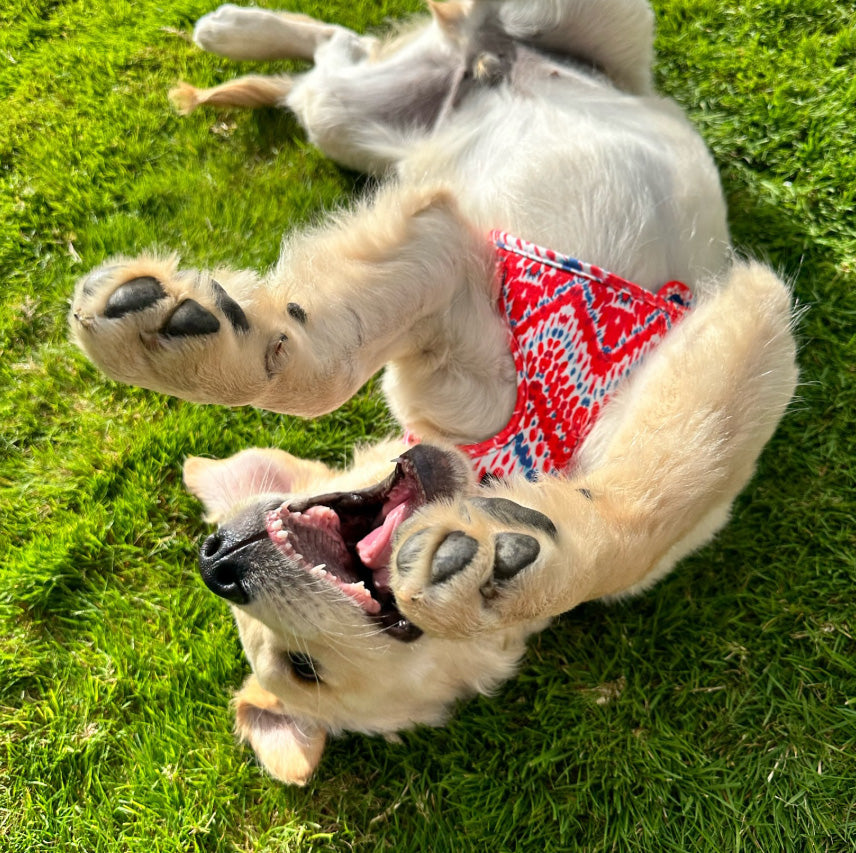Your dog's safety gear needs regular attention. Most pet owners forget that leads and harnesses require replacement every year or two, depending on how often you use them and the material quality.
Your dog's comfort and safety depend on properly fitted, undamaged equipment. A badly fitted dog harness creates uncomfortable chafing and restricts your dog's natural movement. Escape artist dogs find worn-out or loose harnesses the perfect chance to slip away during walks. Regular checks of your dog's lead, harness, and collar stop these problems before they start.
This guide covers practical steps for maintaining and replacing your dog's gear before it becomes dangerous. A few minutes checking your pet's equipment today prevents accidents tomorrow. Keep your four-legged friend safe and secure during every adventure.
Why Regular Gear Checks Keep Dogs Safe
Regular gear inspection keeps your dog safe. One pet owner shared a scary moment when their dog's collar broke while the dog pulled towards another dog—proper maintenance could have prevented this dangerous situation. Checking your dog's equipment should become routine, as even quality items wear out with time and use.
Leads present serious risks when damaged. A weakened lead can snap without warning, letting your dog run into traffic or escape into dangerous areas. Check the entire length for fraying, especially where metal hardware meets fabric. Damaged leads create immediate dangers that could result in your pet getting lost or injured. Regular checks catch these problems early.
Harnesses need the same attention. They develop problems that cause discomfort or create escape chances. Harnesses may stop fitting properly due to wear or your dog's changing size, causing chafing that leads to skin irritation or infection. Check all straps, buckles, and stitching regularly. Harnesses with padding need checking for compression or damage that reduces effectiveness.
Collars need special attention since dogs wear them continuously. Check that the dog collar still fits correctly—especially important with growing puppies. Make sure identification tags stay readable, as these wear down quickly. Some dogs have unusual head or neck shapes that make proper collar fit challenging, so regular checks matter.
Accidents happen despite our care. Most manufacturers design gear to handle tough conditions. Replace leads and harnesses every six months to 18 months, depending on how often you use them and material quality. This simple routine prevents dangerous situations and gives you peace of mind during walks with your dog.
Check Your Dog's Gear: Leads, Harnesses, and Collars
Regular checks of your pet's safety equipment take minutes but give you peace of mind. Set a monthly reminder to inspect all gear properly—this simple habit prevents problems during daily walks.
Leads need careful attention. Start at the handle and work down to the clip. Check stitching points and folded areas where fabric wears fastest. The clip mechanism should open and close smoothly without sticking. Metal parts shouldn't show rust or tarnishing, which weakens the lead. Fabric leads need checking for fraying, especially where they connect to metal parts. Leather leads are different—look for cracking, thinning or stiffness that shows the leather is breaking down.
Harnesses require thorough checking. Focus on buckles, adjusters and connection points first. These areas get the most stress and fail first. Run your fingers along each strap, feeling for thin material or rough edges that might hurt your dog's skin. Padding should stay firm and supportive. Proper fit matters—you should slip two fingers between the harness and your dog's body. Pay attention to chest and shoulder areas where rubbing happens most. High-quality harnesses can stretch or loosen over time, creating escape routes.
Collar checks start with the buckle. Make sure it closes securely and doesn't release with light pressure. D-rings should attach firmly without bending or metal wear. Check the entire collar for fraying edges or stretched holes that affect fit. ID tags need checking too—make sure information stays readable and rings stay secure. Chain collars need each link checked for weakness. Always test proper fit with two fingers between collar and neck—tighter risks choking, looser becomes an escape risk.
Watch for Signs Your Dog's Gear Needs Attention
Dogs can't tell you when their gear feels wrong, but they show you through their behaviour and body language.
Lead problems show up in unexpected ways. Your dog might refuse to walk, stop constantly, or try to bite the lead. Check connection points before each walk—these spots weaken first from repeated pulling and direction changes. Fraying or thinning at clips and handles means replacement time.
Harness discomfort creates obvious signs. Dogs resist walks, move stiffly, or scratch at their harness constantly. Look for red skin, missing fur, or scabs where straps sit. Chest straps cutting into armpits change how your dog walks and can cause joint problems later. Escape artists need special attention—watch for harnesses that slide sideways, or let your dog back out and wiggle free.
Collar issues affect your dog's comfort every day. Coughing, excessive drooling, or pawing at the neck all signal problems. Dogs with narrow heads slip traditional collars easily by pulling backwards. Martingale collars work better for these escape artists—they tighten when pulled but won't choke.
Keep ID tags readable. They're your best chance of getting your dog back if they do escape despite your precautions.
Daily monitoring means connecting your dog's behaviour changes to their equipment. A reluctant walker might be telling you something important about their gear.
When is it Time to Replace and Important Safety Tips
Dog safety equipment wears out with time and use. Replace leads and harnesses every six months to 18 months, depending on frequency of use and material quality. This timeline prevents potential accidents and keeps your dog secure.
Replace leads immediately when you spot fraying, weak sections, or damaged clips. A lead showing wear today might break tomorrow during an encounter with an excited dog. Consider your dog's environment and habits when selecting replacements. Water-loving dogs benefit from waterproof leads that resist moisture absorption, bacteria growth, and unpleasant odours. Store new leads away from chewers who might damage their equipment between walks.
Harnesses need replacement when buckles show wear, straps start fraying, or your dog's size changes. A properly sized replacement harness allows you to place two fingers comfortably between the harness and your dog's body. This "two-finger rule" prevents harnesses that are too tight (causing breathing difficulties or skin irritation) or too loose (creating escape opportunities). Avoid buying larger harnesses for puppies to "grow into"—this creates dangerous escape possibilities as the chest strap can slip down around your dog's legs.
Collar replacement becomes crucial when buckles malfunction, material integrity weakens, or identification tags become difficult to read. Watch for signs your dog has outgrown their collar—if you can't easily slip two fingers between the collar and their neck, it's too small. If your dog can slip their head out, it's too big. You might feel attached to your dog's well-worn collar, but safety equipment requires functionality over sentimentality.


